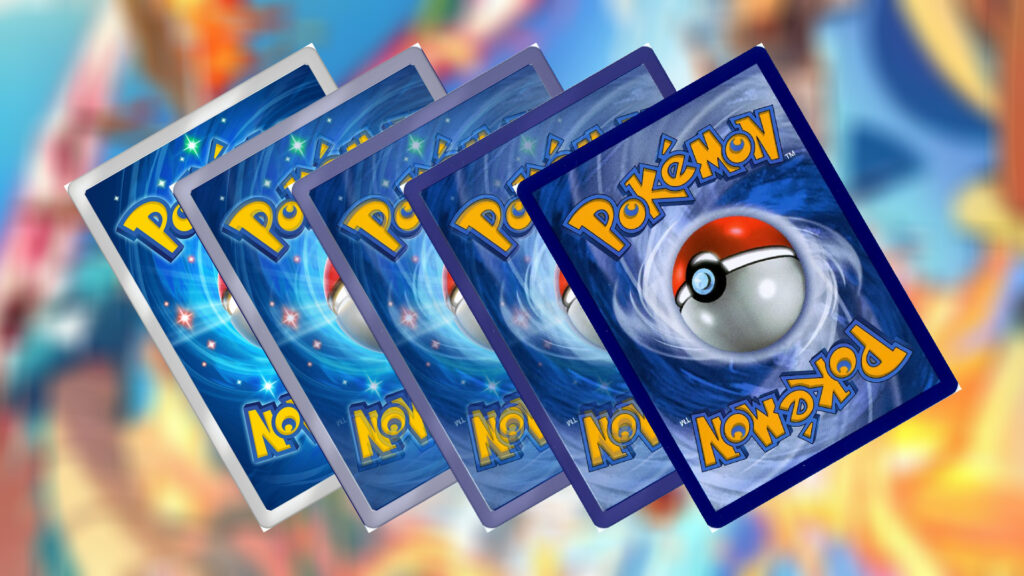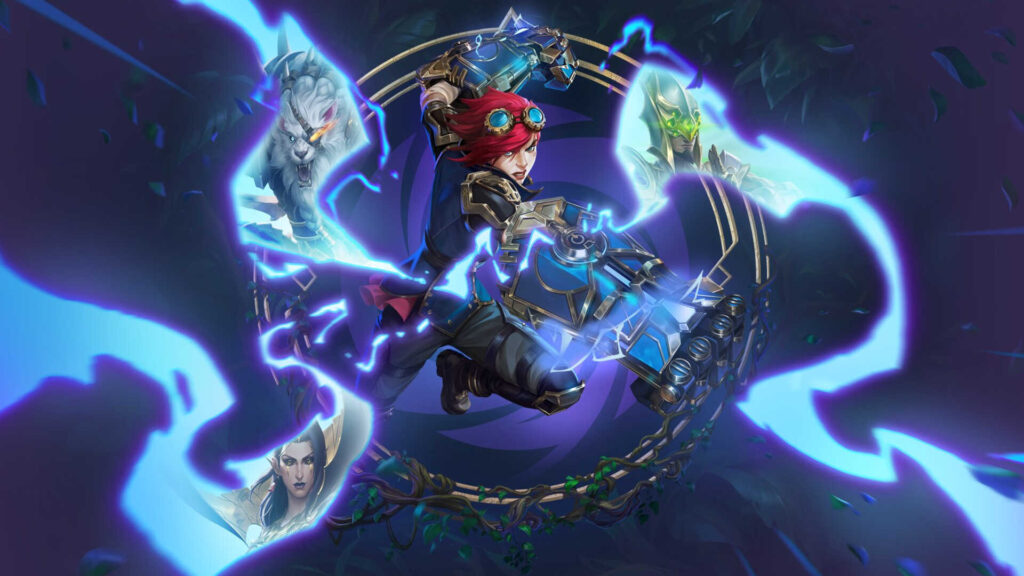Images courtesy of The Pokémon Company
Since its inception in late 2024, fans of Pokémon TCG Pocket have pondered how to translate the digital game into a physical, paper form. It’s not an easy task. We don’t have the objective guidance of The Pokémon Company or DeNA to help us figure this out definitively – not yet, anyway. As a result, the “correct” way to handle a translation from a digital to physical form for PTCGP is muddled by subjectivity.
We can’t tell you how to turn Pokémon TCG Pocket into a physical game (after all, we aren’t TPC!). Even so, we would love to see players use this article as a guideline on how to do it more easily. With that, here’s our assessment of this hypothetical shift for PTCGP.
Step 1. Iron Out The RNG
RNG, or “random number generation,” is a cornerstone of many digital games. With a randomization factor unlike any seen (albeit often poorly imitated) in physical games, RNG allows digital games to get away with so many more shenanigans overall. However, to ensure we can translate this digital game to physical, it’s something we need to address in order to succeed.
Also, note that coin flips and shuffled decks are not a problem here. These are randomly generated outcomes that players essentially generate on their own. They’re not something that we have to solve in the transition from digital to physical. Even if it would be nice to cheese out multiple “Heads” results on a card like Misty, it isn’t quite as plausible on paper.
With that, let’s go over the various kinds of RNG present in Pokémon TCG Pocket and how to mitigate or remove it.
RNG #1. Energy
Energy is arguably the largest hurdle in this transition. In two-to-three type decks, we don’t have the luxury of knowing our next Energy type. However, there is a way we can handle it, and it comes from some of the most frustrating restrictions on deckbuilding we have in Pocket.
In PTCGP, decks are limited to three Energy types at most. Games can go on as long as 30 turns; any more time needed results in a draw. So, with 15 turns each and 2-3 Energy types, simply make a 15-card deck of Energy, divided as evenly as you can. Before the game begins, shuffle that deck in addition to your main deck and use it as your Energy Zone. Problem solved?
Not exactly. The RNG for this dilemma dictates that something else be done, since you could get more than your desired share of a given Energy type in your 15 turns of play. To that end, you’ll want to go a little deeper. Make 15 different piles; one for each type of Energy you’re playing in the deck. Roll a standard six-sided die, evenly demarcating which type of Energy a given number yields. Thankfully, six is divisible by all the amounts of Energy a deck can produce from the Energy Zone. Success!
More Energy Problems
There are two more issues to consider. The first is Energy generation outside of your one-per-turn restriction. To this end, we can use “token” Energy cards. These can be represented either by surplus Energy cards outside of the Energy Zone, or by markers or counters. This may prove especially useful for all the Misty players out there.

The other issue is cards like Porygon-Z, regarding both current (presently only the one) and future effects like it. Randomizing the Energy loadout is a tricky issue to overcome. However, again, all you need to do is roll an eight-sided die when Porygon-Z uses its Buggy Beam attack, designating the Energy type for each face and applying the effect accordingly. Use something like a token to note the Energy type of the actual Energy card, and you have a workable facsimile of this effect.
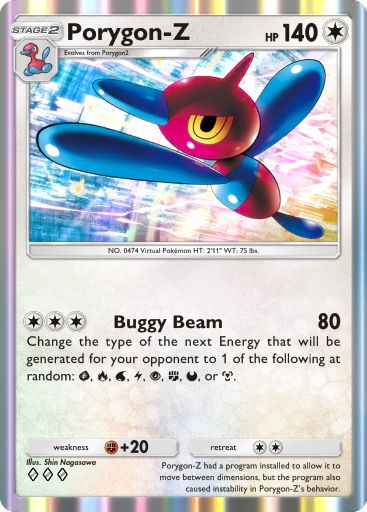
RNG #2. Other “At Random” Effects in Pokémon TCG Pocket
The second source of RNG we can find in PTCGP is found within scattered effects in Abilities and attacks. Overall, “Cry for Help” effects aren’t easy to handle in this capacity; Sprigatito makes producing a physical one-for-one replica of Pocket difficult. However, to this end, we can always go to restrictive mandates in trading card games. One important rule of TCG design is that when a deck is searched through, generally speaking, the deck is shuffled afterwards. So, with regards to Sprigatito’s attack, simply move all possible eligible cards from the deck, shuffle them, and choose one at random. Then, shuffle the rest back into the deck as a whole.
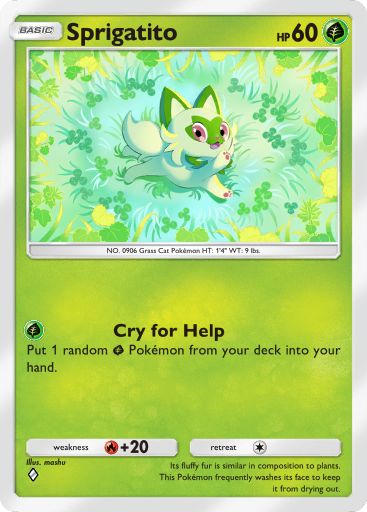
Another card that’s a bit tough to work with in this physical transition is Alolan Muk ex, from the new Celestial Guardians set. It’s a cool card, but it has a very random attack that applies one of five possible Special Conditions to the Active Pokémon. That “five” number is easily solved, however, by introducing a 10-sided die into the mix. (Yes, for this game you’d need at least three different die types, but it’s more likely you’ll only need one for Energy.) Simply assign two numbers to each Special Condition and roll it upon attacking, applying the Special Condition rolled.
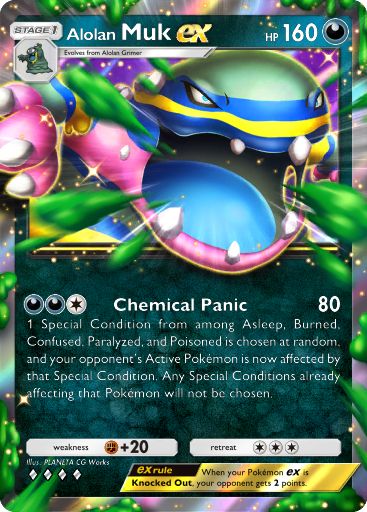
Additional Forms of RNG
As for other “at random” search effects, such as Poké Ball, follow the same principles as Sprigatito. You don’t have to worry about Koffing from Mythical Island or Weedle from Shining Revelry, by the way; with a two-of upper limit on named cards, those will always get the only other copy of the card they’re looking for.
So, now that we have the random number generation factor figured out, what’s next?
Step 2. Fixing Rules Discrepancies
Ultimately, the shift from paper to digital gaming is an easier one than vice versa. This is because, on the whole, digital games can get away with more than physical ones. A good example of this is that when you search for a card in PTCGP, random or otherwise, you don’t have to reveal it to your opponent. In a paper format, unfortunately, cheaters exist, whereas in digital gaming, this isn’t as easy to accomplish without hacking or otherwise jeopardizing one’s account.
The solution to this must be applied to both iterations of Pocket simultaneously. When searching for a card with more characteristics than just being a “card” and putting it from one hidden zone to another (such as from your deck to your hand), you must either a) reveal what you’ve searched for, or b) fail to find the card.
There may be other issues that can be a source of cheating, but this is the biggest one I’ve seen that needs a solution. Moving on!
Step 3. Physical Game Card Logistics
We cannot stress enough that counterfeit cards are not the way to go, especially if The Pokémon Company ever expresses a desire to do what we’re talking about. For the purposes of this hypothetical exercise, however, assume TPCI has started rolling out a physical release of Pokémon TCG Pocket. What then?
Well, sets would either a) be released in full or b) be released in booster packs. It’s more likely that, for cosmetic and collector purposes, the latter would hold true. Now, I don’t want to say that booster packs would be too expensive for just five cards apiece, but let’s presume that they’d cost double the in-game currency cost for each of the packs. After all, physical cards have a material cost.
At its highest, Poké Gold costs $5 for 25 units. A five-card booster costs six Poké Gold (or 12 Pack Hourglasses), and doubling that means you have approximately 13 cards per $5 pack. This is about in line with normal booster packs for the physical Pokémon Trading Card Game. However, we’re getting a considerable amount more bang for our buck, especially if we potentially get two rares instead of just one.
Add to this the sale of tokens, Energy cards, dice, and tick-up counters, and The Pokémon Company may have something realistically cool going on in the future!
Realize Your Pokémon TCG Pocket Dreams
In the end, this kind of assessment is a bit of a pipe dream coming from me. It’s not exactly more than a pie-in-the-sky idea from an optimistic Pokémon TCG Pocket fan. However, this could go out from my fingertips to someone at TPCI or DeNA’s ears, so to speak. And wouldn’t that just be so cool?
But let’s hear from you as well, dear readers. Would you say there’s more to assess for this idea than just ironing out randomization or deliberating how best to allocate pack contents? Sound off below! And, if you’d prefer the exact opposite, we have just the article for you: Do you think that the digital game should adopt the paper rules instead?


